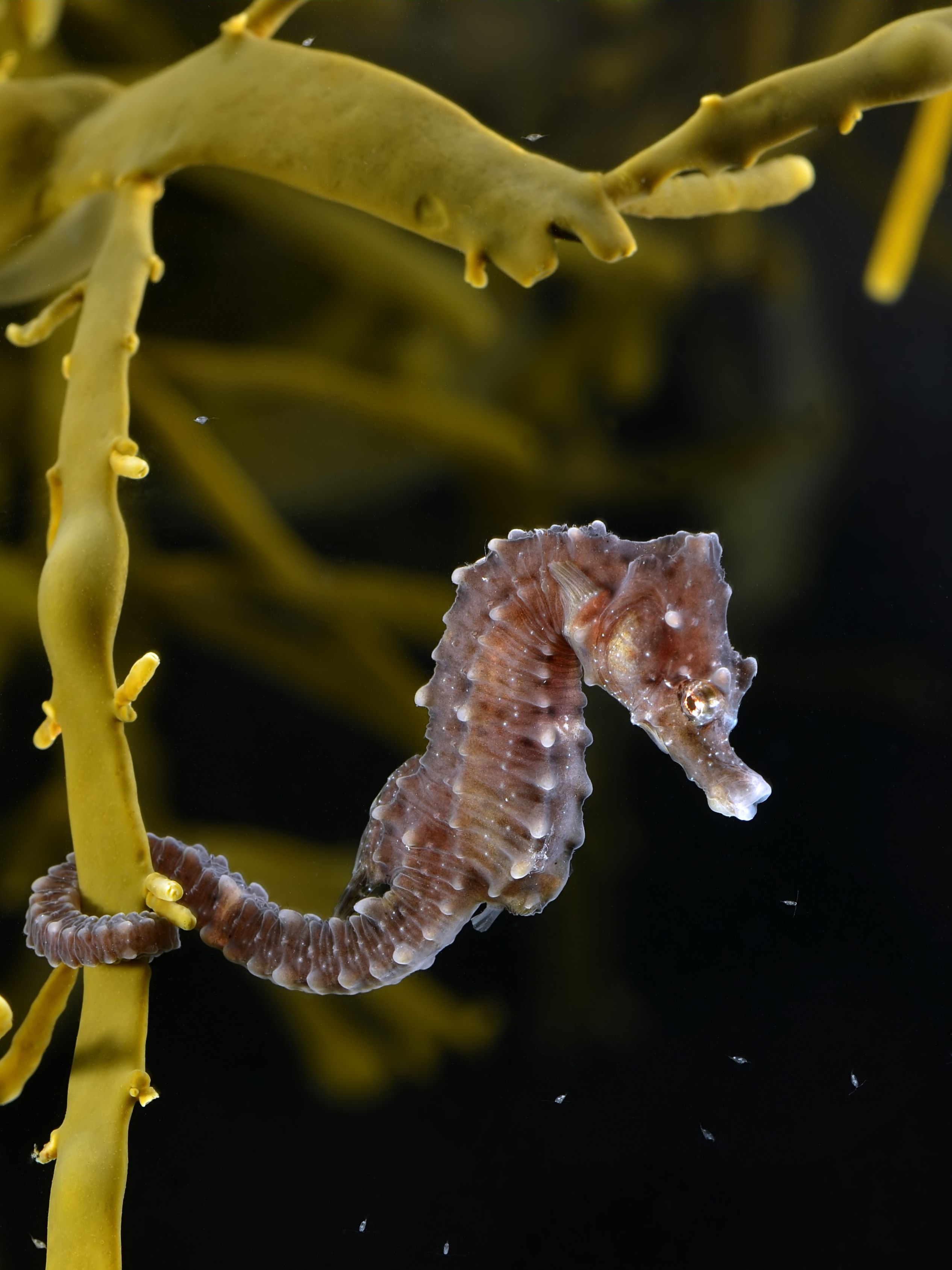Seahorse
 For several decades, a common view of summer street markets is a strange creature, offered as a medallion on a leather leash. Composed as if from parts of different animals, it is almost unreal with its head of a horse, eyes moving independently as the chameleon, armored body as the armadillo, abdominal pouch with a slit like the kangaroo and the monkey's gaunt tail. Other descriptions sound even more fabulous - with the dragon body and the head of a horse with a feathered muzzle. It is not difficult to guess that it is a sea horse, but few know what animal it is actually. Is it fish or something else?
For several decades, a common view of summer street markets is a strange creature, offered as a medallion on a leather leash. Composed as if from parts of different animals, it is almost unreal with its head of a horse, eyes moving independently as the chameleon, armored body as the armadillo, abdominal pouch with a slit like the kangaroo and the monkey's gaunt tail. Other descriptions sound even more fabulous - with the dragon body and the head of a horse with a feathered muzzle. It is not difficult to guess that it is a sea horse, but few know what animal it is actually. Is it fish or something else?
Although they have such an odd appearance, the sea horses are true fish, representatives of the Syngnathiformes family. They prefer the waters of the warmer seas and oceans. They live in the coastal area, where the sea bottom is rich in vegetation. Up to now, about 30 species with dimensions ranging from 2 to 35 cm have been described.
There is only one species in the Black Sea - the common or long-legged sea horse (Hippocampus ramulosus). Its body is covered with bone-shaped plates in the form of rings. The muzzle is elongated, ends with a mouth without teeth. The color is dark brown, sometimes with a yellowish or greenish tinge. The belly is lighter. The length reaches 12 cm and weights up to 5-10 grams. Its spine is well developed. With its help the sea horses swim, but only vertically upright. In fact, the seahorses' "swimming" is odd. They are not good swimmers and move slowly and mainly carried by the water currents - to pass a distance of 30 cm they require about 1-2 minutes. They move from one plant branch to another, and with the help of their tail elegantly wrap on stems. If they do not get caught well, the sea currents often take them away from the places they inhabit and where they would hardly survive. Because they are poorly mobile, they have to be masters of disguise. In danger, they can change color to blend in with their surroundings. They have very good vision - their round and highly mobile eyes rotate independently of each other, allowing them to spot the possible prey or danger in different directions.
One fact of the seahorse's biology is really little known - they are among the few animals in the world where the male "bears" the babies. They breed from May to September, with males and females performing a beautiful and complicated marriage dance with deep bowing and slow circling. Finally, they stand against each other, embrace their tails, and the female lays up to 200 eggs in the male's abdominal sac. Then, with one muscle, the opening of the bag closes, the eggs are fertilized and their development begins. The pouch is rich in blood supply and the many capillaries carry the oxygen needed for the development of the small ones. For 4-5 weeks, the eggs end their full development. Then the muscle releases the opening. After a series of swings back and forth, the father pushes out his little ones. Newborn sea horses are copies of adults, but they are only 15-16 mm in size. Their movements seem cumbersome, as their head and dorsal fin are much more developed than the rest of the body. As soon as they leave their father's bag, the little ones can live alone.
Svetla Dalakchieva, PhD - Ch. curator of the Natural History Museum in Burgas
